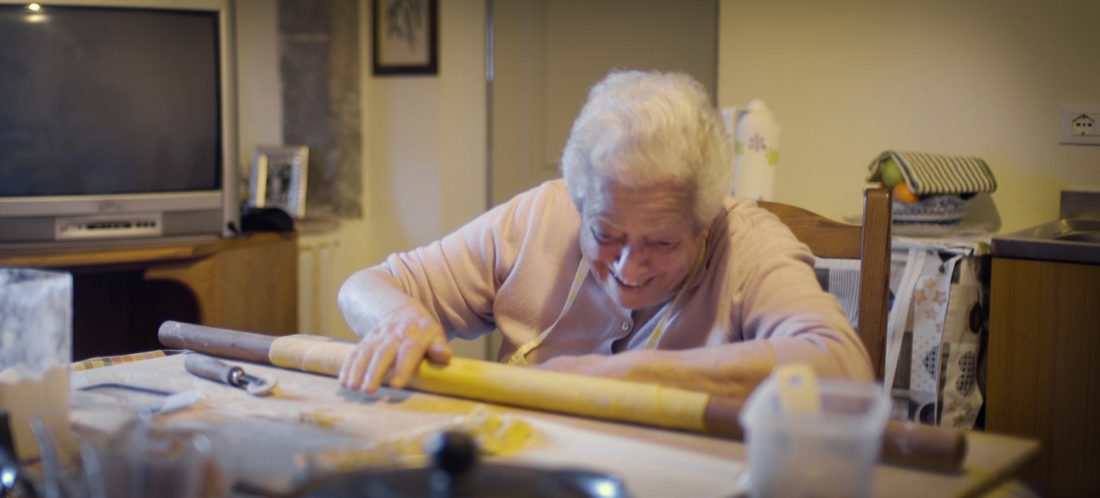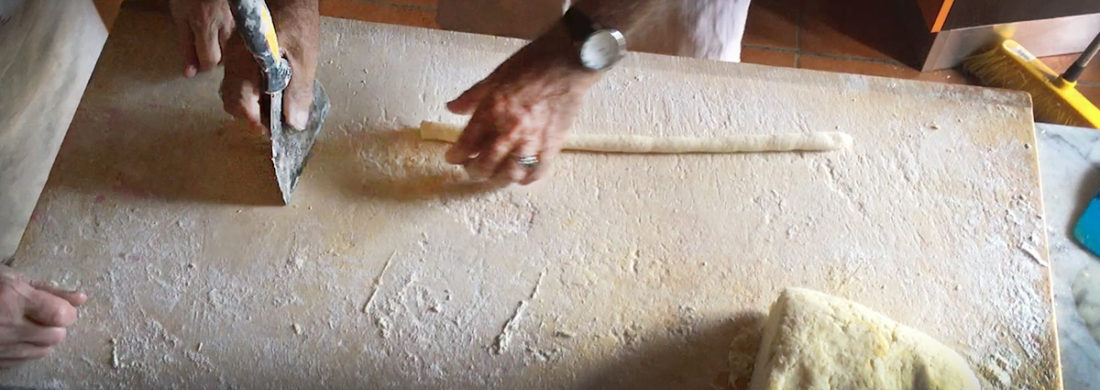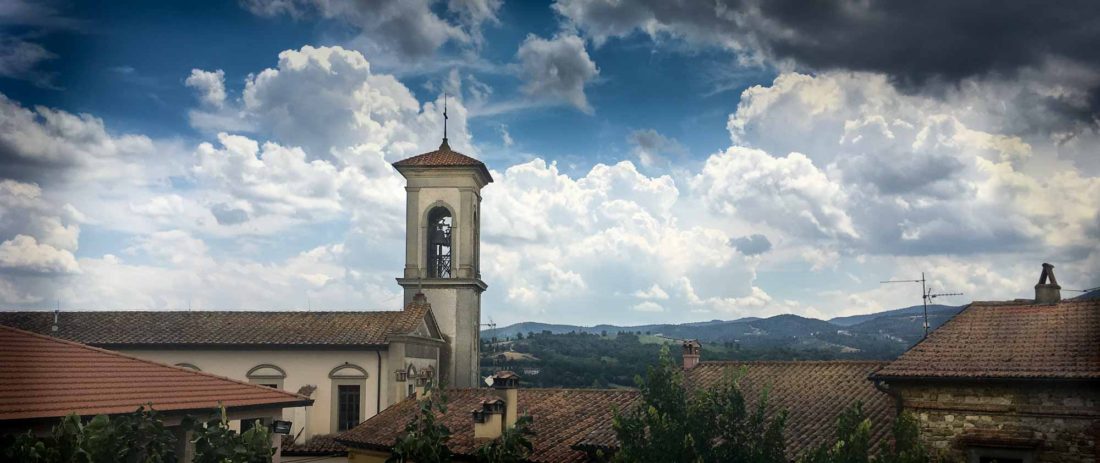September 22, 2018
In
Chow, Live, Recipes
By
Nancy
John and I have this idea to start filming local grandmothers cooking. A possible way to enter more deeply into Italian life, capture some of the spirit of Tuscan woman, and learn more about food.
We gather some savvy, younger locals and start brainstorming about people we can shoot. The grandmother who hunts? Possible. The grandmother who makes feather whips for the lingerie store? Very possible. For our first shoot we settle on two of our collaborators’ grandmother in a house in the countryside outside of town, complete with a huge watermelon patch.
The morning of the shoot comes. We are prepared to act with military precision, which is the norm for any shoot. The “call time” comes to meet our collaborators and head to the country. The meeting location changes. The start is delayed because breakfast isn’t finished. Their grandmother actually lives in the ancient center of town, not near the watermelon patch at all. We start to get nervous.
We arrive at their house on a tiny street from the 1100s and the grandfather, Franco, jumps into cooking action. Maybe the premise of the video, cooking grandmothers, needs to be reassessed?
Then it all starts to unfold. The constant lesson of Italy. You can predict nothing, control nothing, but just step back and enjoy the gifts of grace, ease, and warmth that the Italians offer. Which more often than not is so much more than you could have possibly imagined or engineered.
Anna, the grandmother, is everywhere in the kitchen at once. This gnocchi pas de deux has clearly happened hundreds of times in their kitchen. Both of them are cooking with a rare ease, barely even looking at the food as they cook.
While Franco forms the dough for the gnocchi, and then shapes and cuts it, he tells us stories about what is was like for families growing up as tenant-farmers in the years before the “economic miracle” of the 1960s (thanks Marshall Plan), with 30 people in a house, hunger, limited mobility, and the Padrone with total power.
The conversation ranges across centuries and topics, and the enormous mound of gnocchi dough melts away. Anna is taking away the cut gnocchi, boiling it, and then rolling it in oil to separate and cool, directly on the marble table.
Soon after we sit down with the extended family to eat. As it has been said before, “And it was good.”
This is, in some ways, one of the most unfiltered films we’ve ever done. It’s as close as we can get you to sitting down in a Tuscan kitchen for a visit. Please let us know what you think of this rawer kind of glimpse. And we hope you learn a lot about gnocchi along the way.








